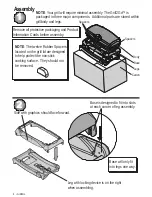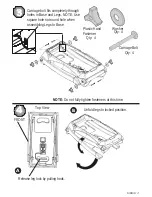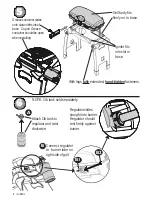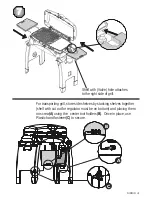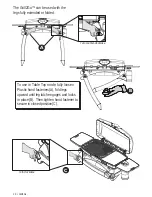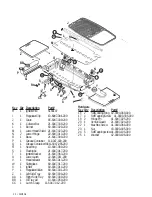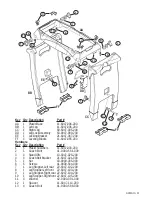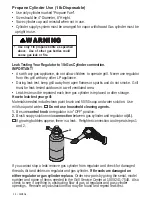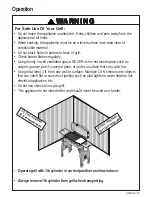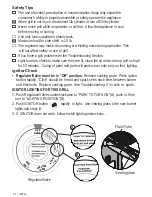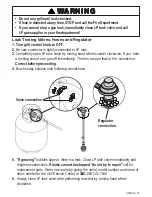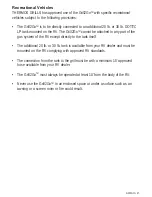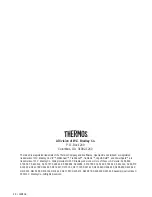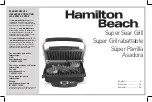
20 • Grill2Go
Storing Your Grill
• Clean cooking grate.
• Clean Grease Container.
• When LP tank is connected to grill, store outdoors in well-ventilated space and out of
reach of children.
• Cover grill if stored outdoors.
• Store grill indoors ONLY if LP tank is turned off and disconnected, removed
from grill and stored outdoors.
• When removing grill from storage follow Cleaning Burner Assembly
instructions before starting grill.
Cooking
Food Safety
•
Food safety is an important part of enjoying the outdoor cooking experience. To
keep food safe from harmful bacteria, follow these four basic steps:
Clean:
Wash hands, utensils, and surfaces with hot soapy water before and
after handling raw meat and poultry.
Separate: Separate raw meats from ready-to-eat foods to avoid cross contami
nation. Use a clean platter and utensils when removing cooked foods.
Cook:
Cook meat and poultry thoroughly to kill bacteria. Use a thermometer
to ensure proper internal food temperatures.
Chill:
Refrigerate prepared foods and leftovers promptly.
How To Tell If Meat Is Grilled Thoroughly
•
Meat and poultry cooked on a grill often browns very fast on the outside. Use a
meat thermometer to be sure food has reached a safe internal temperature, and
cut into food to check for visual signs of doneness.
•
Poultry should reach 180
0
F; breasts, 170
0
F. Juices should run clear and flesh
should not be pink.
•
Hamburgers made of any ground meat or poultry should reach 160
0
F, and be
brown in the middle with no pink juices. Beef, veal, lamb, steaks, roasts and chops
can be cooked to 145
0
F. All cuts of pork should reach 160
0
F.
•
NEVER partially grill meat or poultry and finish cooking later. Cook food completely
to destroy harmful bacteria.
•
When reheating takeout foods or fully cooked meats like hot dogs, grill to 165
0
F, or
until steaming hot.

